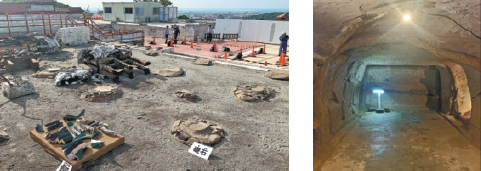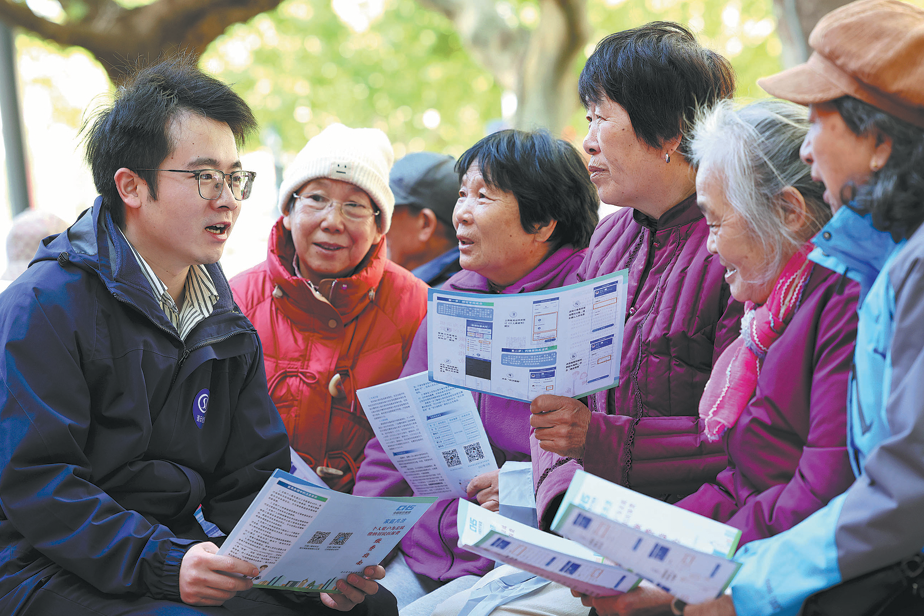Japanese island a paradise for thrill seekers
Okinawa's past as an independent kingdom, its architectural wonders, diving spots and caves make it an attractive destination for visitors
By WANG XU in Naha, Okinawa | CHINA DAILY | Updated: 2020-10-03 09:05

Left: The Shuri Castle is being rebuilt after it was destroyed by a fire last year. Right: The cave in Tomigusuku was used as a command center by the Imperial Japanese Navy. WANG XU/CHINA DAILY
Memorial for the war dead
At the Peace Memorial Park in the southern end of the Okinawa main island, black granite slabs were engraved with the names of all the war dead: Americans as well as Japanese; civilians as well as soldiers.
There are 234,183 names, variously in English, Chinese, Korean and Japanese.
Museums in Japan usually gloss over its own brutalities, portraying the Japanese as victims rather than aggressors. The museum in the park also does not fully explain the background that led the US to invade Okinawa, nor does it acknowledge the brutal Japanese invasions and occupations of China, Korea and other countries.
The museum, however, does "acknowledge the viciousness of the Japanese army", noting that Japanese troops often evicted civilians from caves to face ground shelling or killed them outright.
"As the soldiers handed out grenades, they told us 'Tomorrow is the landing day. We cannot keep the civilians alive. If needed, use this to die'… I was given the grenade, but I was too afraid to die," wrote Hatsuko Miyahira, a survivor who endured that terrible summer of 1945 at the age of 19, in his testimonial displayed in the museum.
Numerous accounts in the museum and other recollections by survivors give a clearer picture of the tragedy.
The Japanese army had told local residents in Okinawa that the Americans would torture them and kill everyone, which led to people committing suicide to avoid rape and mutilation they had feared.
In a cave called Chibichiri Gama, 83 people died by their own hands or at the hands of their parents even after US troops dropped leaflets in Japanese, pleading with them to surrender and explaining they will be treated well.
However, no one believed the Americans. When they came close to the mouth of the cave, they witnessed the horror: parents had killed their children and then killed themselves.
"It has been 75 years since the war ended. However, the sorrow of losing beloved friends and family has never healed. It has only got stronger," Okinawa Governor Denny Tamaki said in his speech at a memorial event in June. "It is our duty to keep sending the message of the terror of war and the importance of peace to the world," he added.
wangxu@chinadaily.com.cn
























